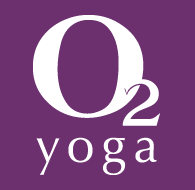Pincha Mayurasana, or Forearm Stand, is one of my favorite poses. Pincha Myurasasa translates to “peacock feather.” Think of your feet lightly reaching for the sky in a multicolor display of energy! Okay, I am reaching, but you can get the image! This posture is one of the more difficult inversions, but is less injury-prone than headstand or shoulderstand. Yet it requires more shoulder flexibility than handstand. In Forearm Stand, the head remains off the floor, which gives some relief to the neck if you can let it go. However, many people tend to crane the neck either for balance or due to tightness in the shoulders. This is a problem for several reasons; it can stress the neck, but lifting the head also misaligns the rest of the spine. Ideally, the spine in this posture stays in neutral, which means the head hangs straight down and the rest of the body stacks straight up over it. If the head lifts, the feet tend to compensate and shift over the head, which causes the lower back to bow and collapse in a banana shape.
The shoulder joint is the least stable weight-bearing joint. It has a huge range of motion, but consists of a constellation of little tiny muscles, collectively called the rotator cuff, that holds the upper arm bone in the socket. Forearm Stand requires the shoulder to be in almost full flexion, which means the upper arm points straight up and aligns with the ears. Many of us don’t have that level of flexibility, so we compensate by rotating the elbows out and hands in (internal rotation of the shoulder). Unfortunately, internal rotation is the worst position for the shoulder, because it compresses the rotator cuff muscles. It also makes the head hit the floor!
So, the focus of the month will require lots of shoulder mobility while strengthening the joint in the proper way. This means stretching the front of the shoulders and chest while strengthening the muscles that hold the joint together. Flexibility without strength is a recipe for injury, so we will be doing lots of upper body strength work.
Also—you guessed it—this pose requires lots of core strength. We will definitely be developing stability in the spine to maintain the alignment discussed above. Even more importantly, like always, we will find new and fun ways to build strength and flexibility and get upside down!


